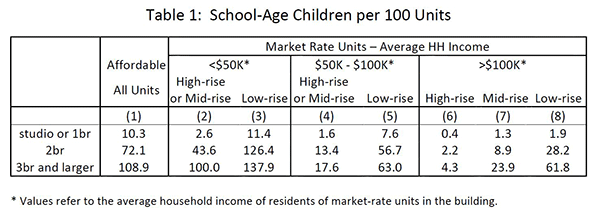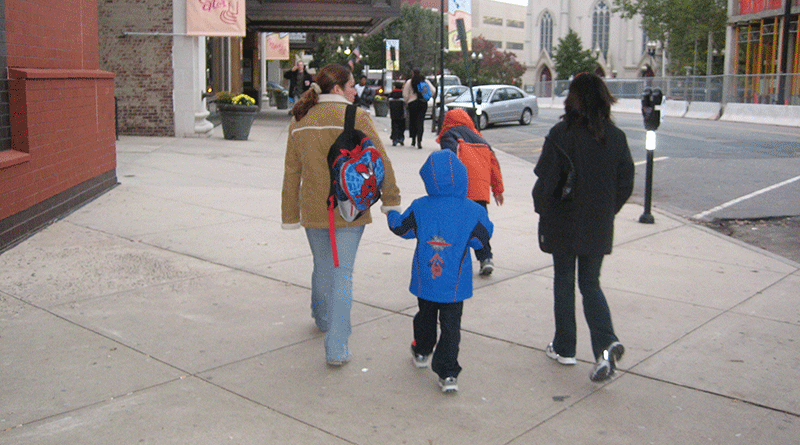School-Age Children in Rental Units in New Jersey: Results from a Survey of Developers and Property Managers. (2018). Morris A. Davis, Ph.D, David Frame, Ph.D., Roland S. Landell, and Debra Tantleff. Rutgers Center for Real Estate White Paper Series.
A study completed in July 2018 by the Rutgers Center for Real Estate estimates the number of school-age children associated with recent constructed New Jersey market-rate and affordable rental units. The study, which surveyed developers and property managers of multi-family rental buildings, found three variables essential to accurately predicting the number of school-aged children (aged 5-17) arising from a new development: the distribution of the number of bedrooms in units; the product type of development (high-rise, mid-rise or low-rise); and the expected household income of market-rate residents.
Results from the study may be intuitive to many. The study found that regardless of income level or building type, the number of school-age children increases with the number of bedrooms in units. In addition, for any given number of bedrooms and product type, as income increases the number of school-age children decreases. Holding income and number of bedrooms fixed, the number of school-age children increases from high-rise, to mid-rise, to low-rise product type. Finally, the study identified similar results for affordable units and for market-rate units in buildings whose occupants earn an average income of less than $50,000 a year.
The study authors present their findings in a matrix (displayed below) designed to enable community leaders, developers, and other interested parties to estimate the expected number of school-age children generated by new rental development. Each element of the table represents expected school-age children per 100 units based upon average household (HH) income, high-rise or mid-rise vs low-rise, and number of units.

The study authors also assessed the effect of locating new development near a transit hub and near a highly-regarded public school system. They suggest that both school-quality and living within a half-mile of a transit hub are important in determining the number of school-age children who will live in new development and the effects may vary by household income. However, the small sample sizes of the current study provided mixed results and prevent the study authors from reaching definitive conclusions.

